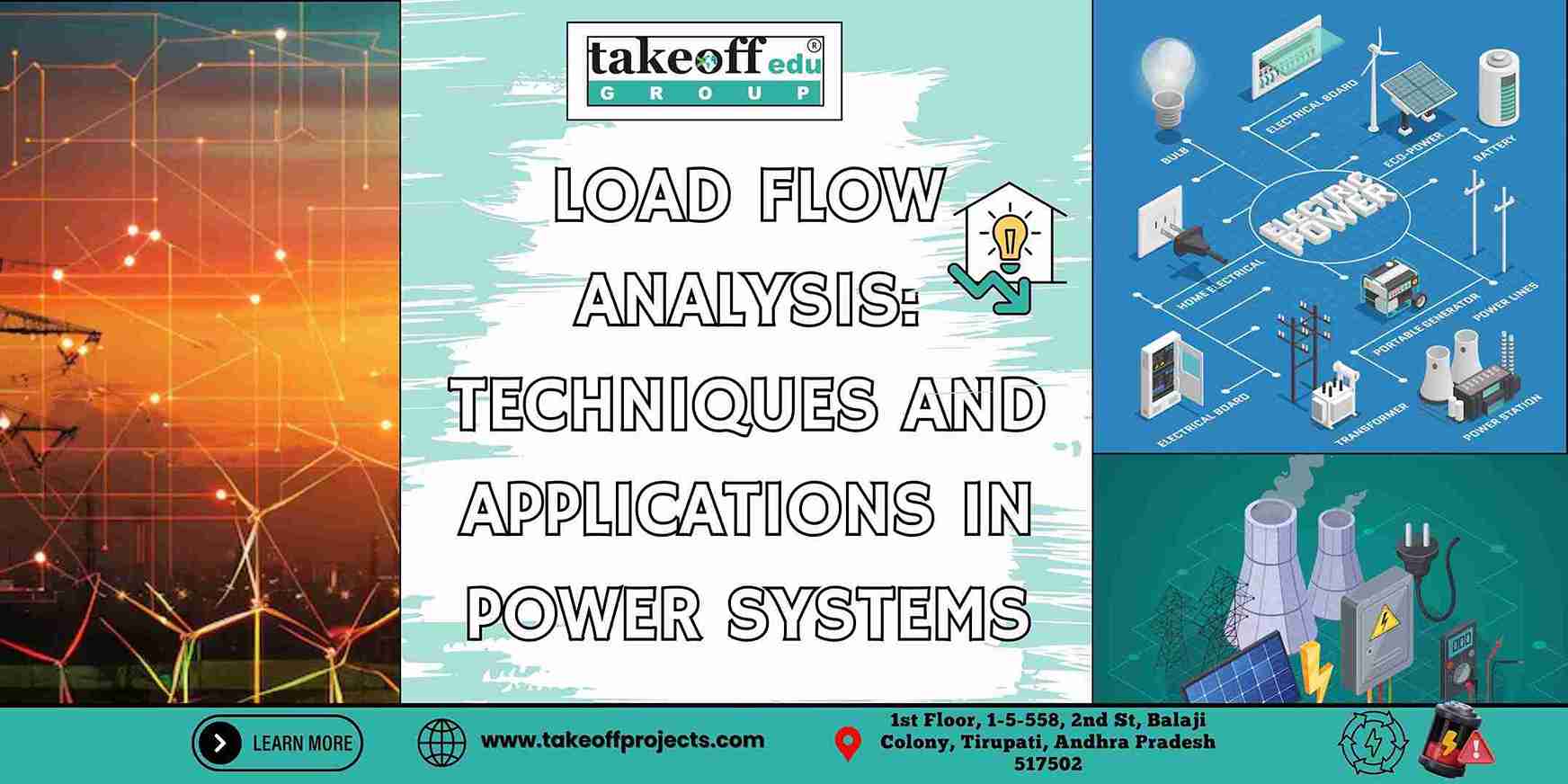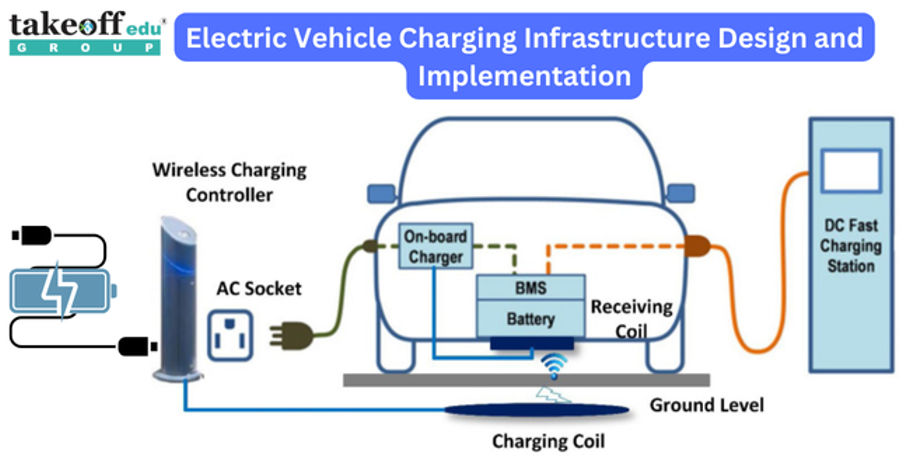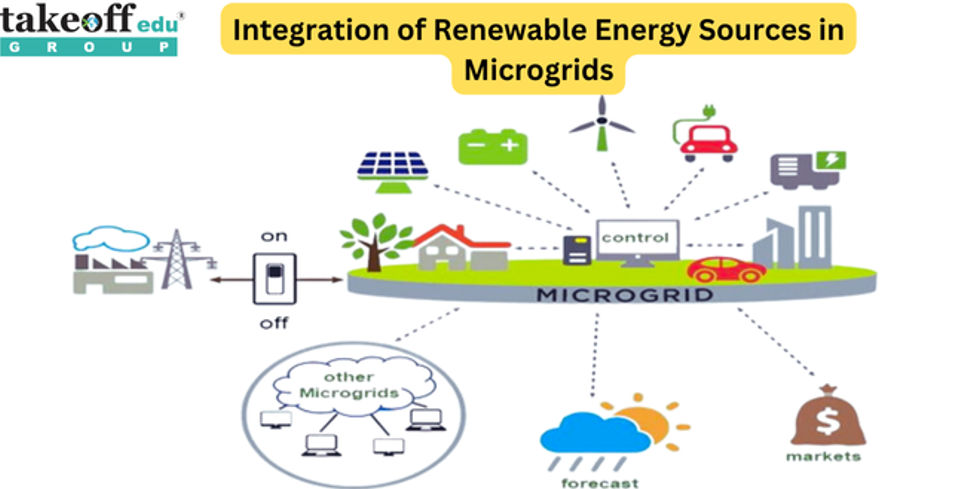A load flow study is an important process that is termed as power flow analysis and is conducted in electrical engineering to study the behaviour of a power system under steady-state operation, allowing voltages magnitudes and phase angles at each bus to be determined along with the real and reactive power flows over transmission lines in order to get the delivery of the generated power to the consumers as efficiently and reliably as possible.
What is Load Flow Analysis?
Load flow analysis utilizes electrical flowing through the network on the basis of generation, load demands and system constraints. It helps engineers visualize how electrical flows from generation sources to end-users and helps identify potential problems such as voltage drops, power losses, and overloads.
Techniques for Load Flow Analysis
Several numerical methods are used to perform load flow analysis:
1. Newton-Raphson Method
• Introduction: The fast convergence of an iterative method
is the subject of discussion, mainly, in large, complex networks.
• Applications: Suitable
for real-time nature operations and in complex examined power grids for
undergoing testing of fuzzy models.
2. Gauss-Seidel Method
• Overview: A simpler iterative
technique, easy to implement but slower to converge compared to Newton-Raphson.
• Applications: From small to medium-sized
networks and in education.
3. Fast Decoupled Load Flow (FDLF) Method
• Overview: It is a modification of the Newton-Raphson method with faster convergence due to the decoupling of active and reactive electrical calculations.
• Applications: These are well suited for very large systems where speed is of the essence, such as real-time control centres.
4. Decoupled Load
Flow Method
• What It Does: This method simplifies the load flow equations by considering real and reactive current independently thus lessening computation demand.
• Where It Is Used: This will be applied in systems where a fast approximation is required.
Applications of Load Flow Analysis
Load flow analysis is essential across the various domains of power systems:
1. Systems Planning and Design
• This involves the analysis of various operational scenarios to design new power systems and develop existing networks.
2. Operational Management
• The primary objective of ensuring its optimal distribution to reduce power loss and prevent overloading the equipment.
3. Tactical system evaluation
• Enriched from the study of systemic behaviour with different conditions of operation.
4. Fault Analysis and Protection Coordination
• The understanding that how the imbalanced force directions devoted for a better protective scheme.
5. Integration of Renewable Energy
• Looks into the effect of intermittent renewable sources on the grid's stability and performance.
Core Concepts in Load Flow Analysis
Before performing a Load Flow Analysis faultlessly and productively, one must be well-versed with the basics.
- Buses: This refers to nodes which may be generators, loads or transmission lines. Buses are classified based on their parameters into slack, PV (generator) or PQ (loads).
- Transmission Lines: These paths serve in the transfer of electric from bus to bus as defined in terms of impedance, which, in turn, will influence the current and voltage levels.
- Voltage Magnitude and Phase Angle: Phase angle is the measurement of the angle through which the voltage reaches its peak, while voltage magnitude expresses the difference in the amount of potential energy along the two points of its circuit.
- Real and Reactive Power: Real power (expressed in MW) is the usable power, while reactive power (in measured MVAR) is the means to maintain voltage levels and to support real transmission.
- Power Flow Equations: These mathematical relationships provide descriptions about voltage, current and power in the network, which are the fundamental principles of Load Flow Analysis.
Challenges in Load Flow Analysis
The Load Proceed Analysis is faced with numerous challenges, despite being of primary importance:
- Modern power system complexities: The complexity increases concerning interconnected networks and various energy sources, which makes multi-dimensional analysis quite a challenge.
- Accuracy of the Data: Validity of an outcome requires decent quality data, being accurate and representative of the current real-world situation. Unreliable or imprecise data will virtually guarantee faulty results and poor decision-making.
- Computational Demands: Computing demands become substantial-correlating with the systems size, when more sophisticated methods such as Newton-Raphson are employed.
- Renewable Energy Integration: The variability and intermittent nature which is characteristic of renewable energy adds complexities demanding more sophisticated modelling and simulation techniques.
- Real-time analysis: Dynamic and real-time agents must have algorithms that are quite efficient and powerful computer hardware to respond to variations in the electrical system.
- Cybersecurity Issues: The need for ensuring the safety of data and applications against cyber threats is increasingly relevant as these analytical tools get more tightly linked with digital systems.
Conclusion
The Load Flow Analysis is an essential concern in Power System Engineering; it provides insights into how the electrical grids perform and interact, Thus having voltage profiles and power flows aid engineers in effective design, operation and optimization of power systems. Load Flow Analysis becomes increasingly important as the power system evolves through renewable energies and increasing demand. It is important to deal with such challenges as complexity in systems and data accuracies so that a reliable and efficient energy distribution remains intact. The capability of Load Flow analysis will eventually be enhanced with advanced tools and future trends to ensure that electrical grids are stable, efficient, and adoptively welcoming the changing needs of the society.

 Power Electronics for Smart Grids: Enhancing Efficiency
Power Electronics for Smart Grids: Enhancing Efficiency  Introduction to Control Systems: Principles and Applications
Introduction to Control Systems: Principles and Applications  Control Strategies for Electric Drives: An Overview
Control Strategies for Electric Drives: An Overview  Electric Drives: Fundamentals & Key Components
Electric Drives: Fundamentals & Key Components  Applications of Power Electronics in Renewable Energy Systems
Applications of Power Electronics in Renewable Energy Systems  Designing Efficient Power Converters: Tips and Techniques
Designing Efficient Power Converters: Tips and Techniques  Advances in Power Semiconductor Devices
Advances in Power Semiconductor Devices  Power Electronics: Key Concepts and Applications
Power Electronics: Key Concepts and Applications  Cybersecurity in Power Systems: Protecting Critical Infrastructure
Cybersecurity in Power Systems: Protecting Critical Infrastructure  The Evolution of Power Transmission: From AC to HVDC
The Evolution of Power Transmission: From AC to HVDC  Impact of Energy Storage on Power System Management
Impact of Energy Storage on Power System Management  Microgrids: Enhancing Resilience and Efficiency in Power Systems
Microgrids: Enhancing Resilience and Efficiency in Power Systems  Innovative Technologies in Power System Protection
Innovative Technologies in Power System Protection  Challenges and Solutions in Power System Stability
Challenges and Solutions in Power System Stability  Final Year Electrical Engineering Project Ideas for College Students
Final Year Electrical Engineering Project Ideas for College Students  The Role of Renewable Energy in Modern Power Systems
The Role of Renewable Energy in Modern Power Systems  Smart Grids: Revolutionizing the Future of Power Systems
Smart Grids: Revolutionizing the Future of Power Systems  Automated Power Factor Correction: Improving Energy Efficiency
Automated Power Factor Correction: Improving Energy Efficiency  Powering the Future: A Renewable Energy Harvesting System
Powering the Future: A Renewable Energy Harvesting System  Smart Grid Solutions: Enhancing Electrical Distribution Efficiency
Smart Grid Solutions: Enhancing Electrical Distribution Efficiency  Electric Vehicle Charging Infrastructure Design and Implementation
Electric Vehicle Charging Infrastructure Design and Implementation  Integration of Renewable Energy Sources in Microgrids
Integration of Renewable Energy Sources in Microgrids  Electrical Projects Engineering Students
Electrical Projects Engineering Students  M.Tech Thermal Engineering Projects
M.Tech Thermal Engineering Projects  IEEE Projects for Electrical Engineering
IEEE Projects for Electrical Engineering  Mini Projects for EEE
Mini Projects for EEE  Mini Projects for Electrical Students
Mini Projects for Electrical Students  Top Electrical Projects for Final Year Students
Top Electrical Projects for Final Year Students  10 Interesting Projects for Electrical Engineering Students 2022
10 Interesting Projects for Electrical Engineering Students 2022  7 Trending Power Systems Based Projects for EEE
7 Trending Power Systems Based Projects for EEE  Top 10 Power Electronics Projects for EEE
Top 10 Power Electronics Projects for EEE  Top 16 Electrical Engineering Projects
Top 16 Electrical Engineering Projects 
 Paper Publishing
Paper Publishing


